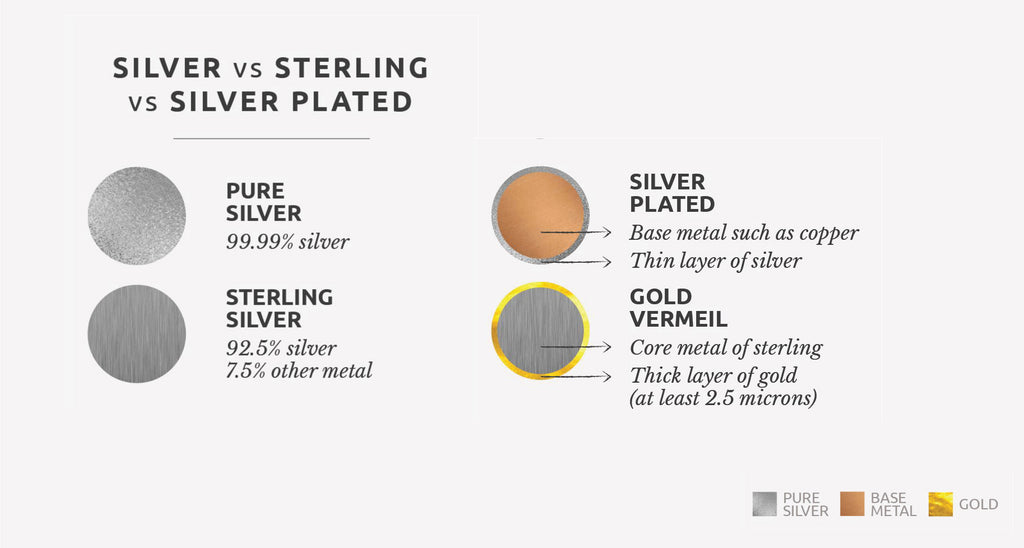Sterling Silver / Silver Filled / Silver Plated / Gold Vermeil - All explained

We were hoping you could rest assured that your jewellery can last a very long time, which is why we choose only to use 925 and 999 silver. This post is going to break down the differences between solid, vermeil, filled and plated silver, so you understand a little bit more about what goes into your jewellery.
In the previous post, we talked about the differences between 925 and 999 sterling silver (refresher here).
Silver Plated
When something is silver plated, it means its base metal is some other type of material such as copper, nickel, pewter, or white metal, and the base metal has been quickly dipped in a silver bath. The result? The base metal is now wrapped with a skinny layer of silver. You may not realise the difference at first glance, but it actually has a lighter silver colour than sterling silver. However, this layer is quick to fade and oxidise, the plating might actually fall off over time, and the base metal such as nickel might cause skin allergy overtime when it directly touches your skin. Most fashion jewellery is silver-plated, making the cost as low as possible.
Silver Filled
As with all other precious metals, the price of sterling silver fluctuates and has been increasing over time. Many jewellery designers look for other alternatives to keep costs down, and silver-filled material has been a popular option. Instead of being dipped in silver, silver-filled jewellery undergoes a mechanical bonding process that melts a thicker layer of silver onto the base metal. It is either a 5% or 10% layer of durable sterling silver bonded to (filled with) a copper-alloy or brass-alloy centre. Although filled jewellery will maintain its silver cast for longer, it will inevitably undergo discolouration and oxidisation after time.
Sterling Silver
There are two common types of sterling silver, 925 and 999, they are the purity mark of the silver. 925 sterling silver means it is made of 92.5% pure silver and 7.5% other material. On the other hand, 999 sterling silver is made up of 99.9% of silver, also known as fine silver or pure silver. Since it is a precious metal, it has a higher resale value, very durable and easy to maintain. That’s why By Me always uses sterling silver as our primary material, not only sterling silver is extremely versatile and most importantly, hypoallergenic. There is no nickel in the composition of sterling silver which makes it one of the most non-reactive varieties of all the precious metals that exist. So if you are allergic to nickel or brass, sterling silver jewellery is the right option for you.
Gold Vermeil
Gold Vermeil is basically using 925 or 999 sterling silver as the base metal and plated with a thick layer of 14k-24k gold. Gold Vermeil is the perfect option for those with metal allergies due to the durable thickness of the gold combined with the base of sterling silver.

Leave a comment